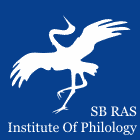 |
|
||||||||||||
|
Institute of Philology of
the Siberian Branch of Russian Academy of Sciences |
|
||||||||||||
|
|||||||||||||
| Sibirskii Filologicheskii Zhurnal (Siberian Journal of Philology) | |
|
Article
Authors: Natalia V. Konstantinova Novosibirsk State Pedagogical University, Novosibirsk, Russian Federation In the section Study of literature
Abstract: This paper characterizes the plot scenario of “a journey with a pot of geraniums” as a parody of the sentimental travelogue canon. The analysis focuses primarily on the version presented in Vasily Sipovsky’s understudied novel “Puteshestvie Erasta Krutolobova v Moskvu i Sankt-Peterburg v 30-kh godakh 19 stoletiya” (“Erast Krutolobov’s journey to Moscow and St. Pe-tersburg in the 1830s”). The study uncovers the essential elements of the “touching tale of geraniums” that characterize the parody of the “sentimental canon.” These include: (1) a stagecoach journey from Moscow to St. Petersburg as the primary route; (2) the rotagonists, an old maid and a large geranium bush; (3) the purpose of the journey, which involves delivering the geranium as a cherished memento from a long-lost love; and (4) the finale, in which the man fails to recognize the plant, ultimately shattering the heroine’s heart. For the first time, the pretext of Sipovsky’s novel is established. It is the parody travelogue “Putevye vpechatleniya i, mezhdu prochim, gorshok gerani” (“Travel impressions and, by the way, a pot of geraniums”) by Alexander Veltman, published in 1840 in the magazine “Syn Otechestva.” Furthermore, the study analyzes the function of the floral code, positioning the geranium, a symbol contrasting to the poetic peony and rose, as a central element of the parodic elements of both Sipovsky’s and Veltman’s travelogues. Keywords: travel, travelogue, parody, plot situation, geranium, heroine, sentimental canon, pretext Bibliography: Cross A. N. M. Karamzin: a study of his literary career 1783–1801. London, 1971, 306 p. Dickinson S. Imagining space and self russian travel writing and its narrators, 1762–1825. PhD Diss. Harvard University, 1995, 198 p. Konstantinova N. V. Parodiya na tip “chuvstvitel’nogo puteshestvennika” v russkikh travelogakh pervoy treti 19 veka [A parody of the type of “sensitive traveler” in Russian travelogues of the first third of the 19th century]. Izvestia. Ural Federal University Journal. Series 2. Humanities and Arts. 2024, vol. 26, no. 1, pp. 9–25. Mamurkina O. V. “Novyy chuvstvitel’nyy puteshestvennik, ili Moya progulka v A**”: spetsifika povestvovatel’noy struktury traveloga [“A new sensitive traveler, or my walk to A **”: the specifics of the narrative structure of a travelogue]. Philological Sciences. Issues of Theory and Practice. 2015, no. 6 (48), pt. 2, pp. 124–127. Oznobishin D. P. Selam, ili Yazyk tsvetov [Selam, or the Language of flowers]. St. Petersburg, Dep. nar. prosveshcheniya, 1830, 132 p. Sharafadina K. I. “Yazyk tsvetov” v russkoy poezii i literaturnom obikhode pervoy poloviny 19 veka (istochniki, semantika, formy) [“The language of flowers” in Russian poetry and literary usage of the first half of the 19th century (sources, semantics, forms)]. Dr. philol. sci. diss. St. Petersburg, 2004, 431 p. Veselova A. Yu. Karamzinskiy kod v romane V. V. Sipovskogo “Puteshestvie Erasta Krutolobova” [Karamzin’s code in the V. Sipovsky’s novel “The journey of Erastus Krutolobov…”]. Slovo.ru: Baltic accent. 2016, vol. 7, no. 3, pp. 65–73. Yazyk tsvetov, ili Opisanie emblematicheskikh znacheniy, simvolov i mifologicheskogo proiskhozhdeniya tsvetov i rasteniy. S pribavleniem stikhotvoreniy, napisannykh na tsvety russkimi poetami [The language of flowers, or a description of the emblematic meanings, symbols, and mythological origins of flowers and plants. With the addition of poems written on flowers by Russian poets]. St. Petersburg, 1849, 125 p. |
 |
Institute of Philology Nikolaeva st., 8, Novosibirsk, 630090, Russian Federation +7-383-330-15-18, ifl@philology.nsc.ru |
© Institute of Philology |


